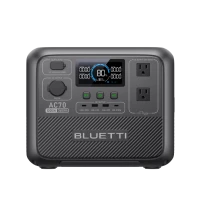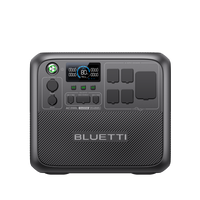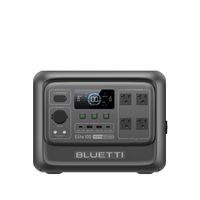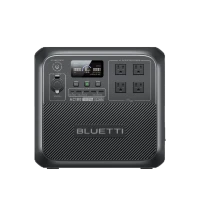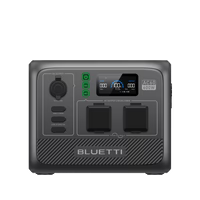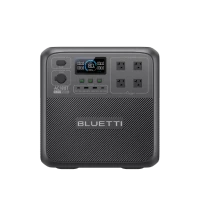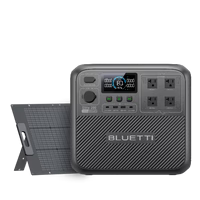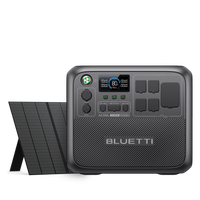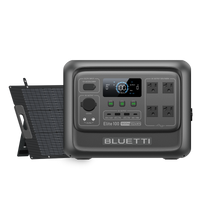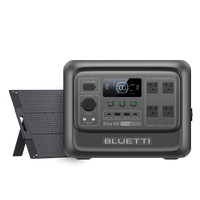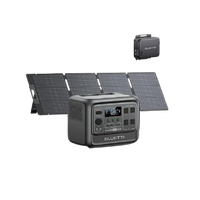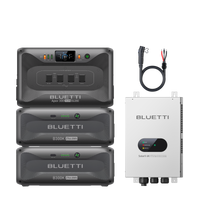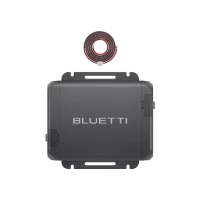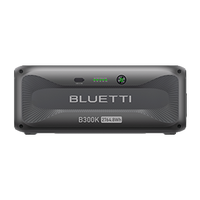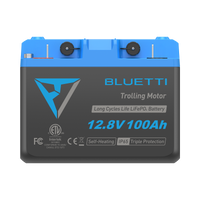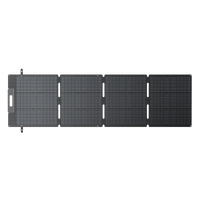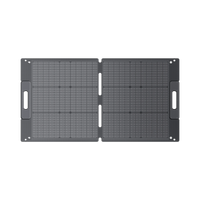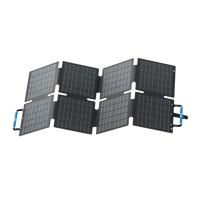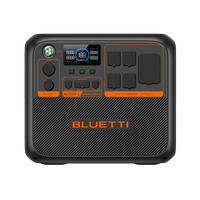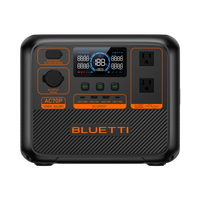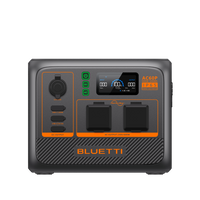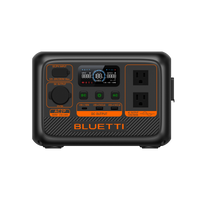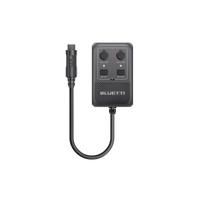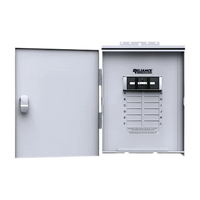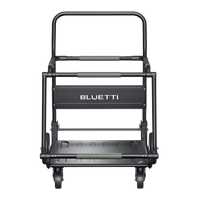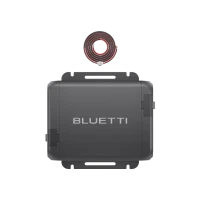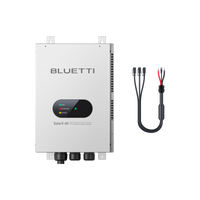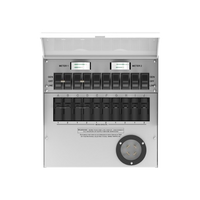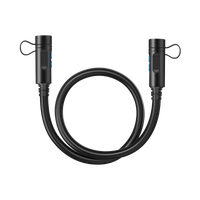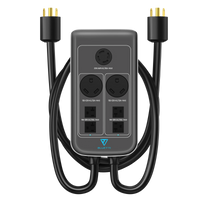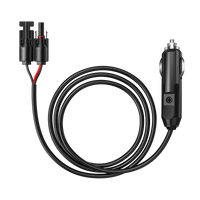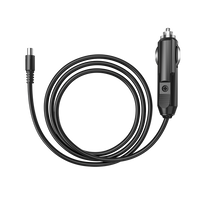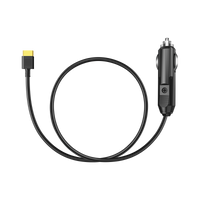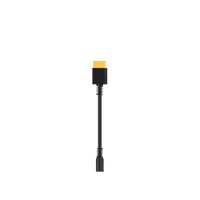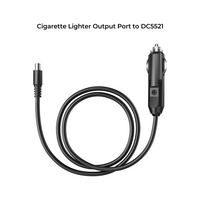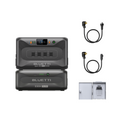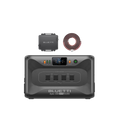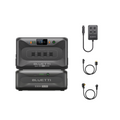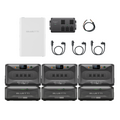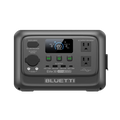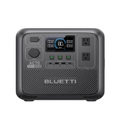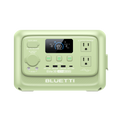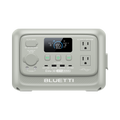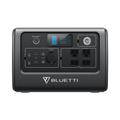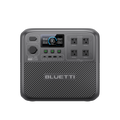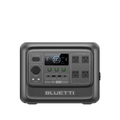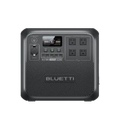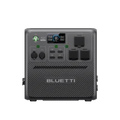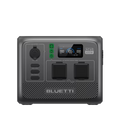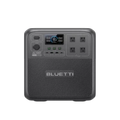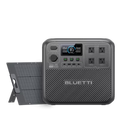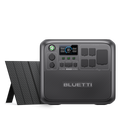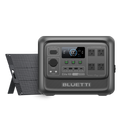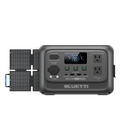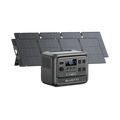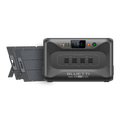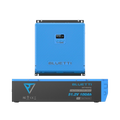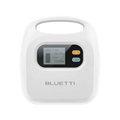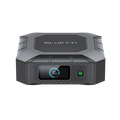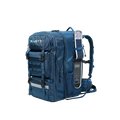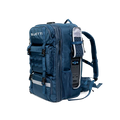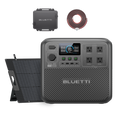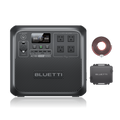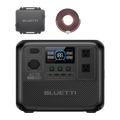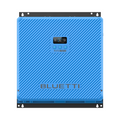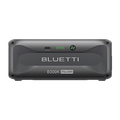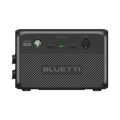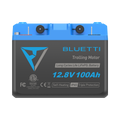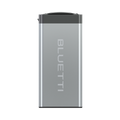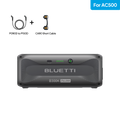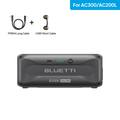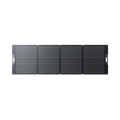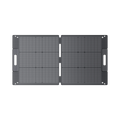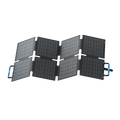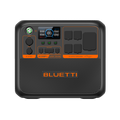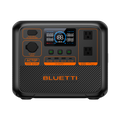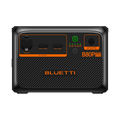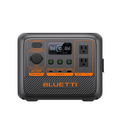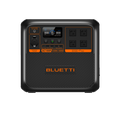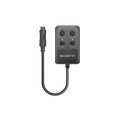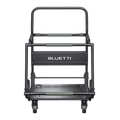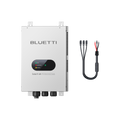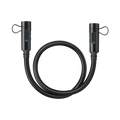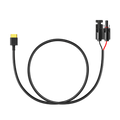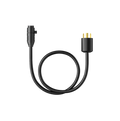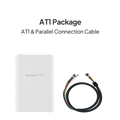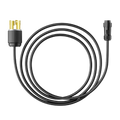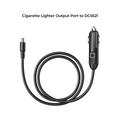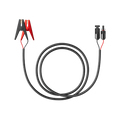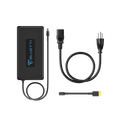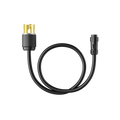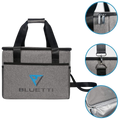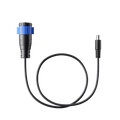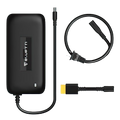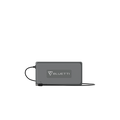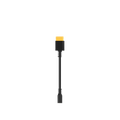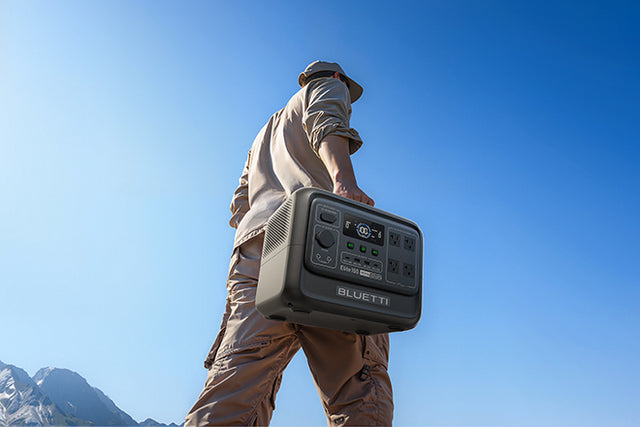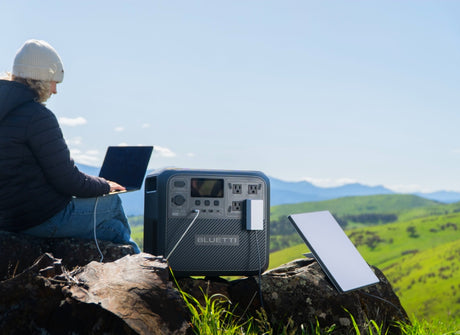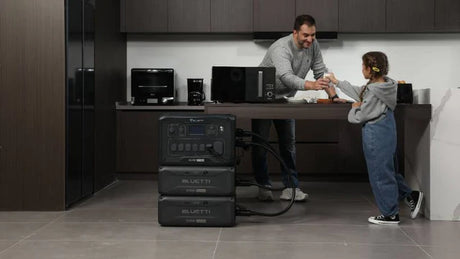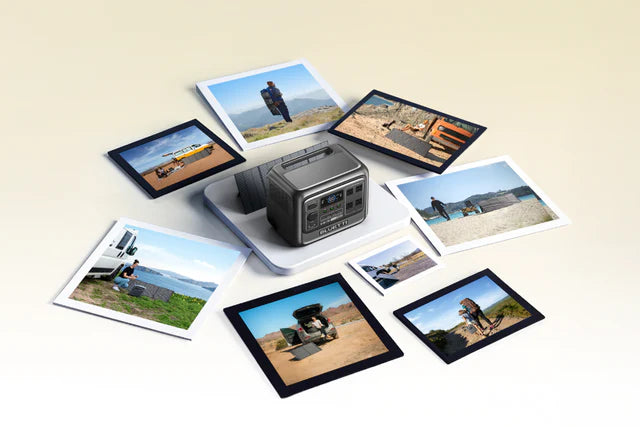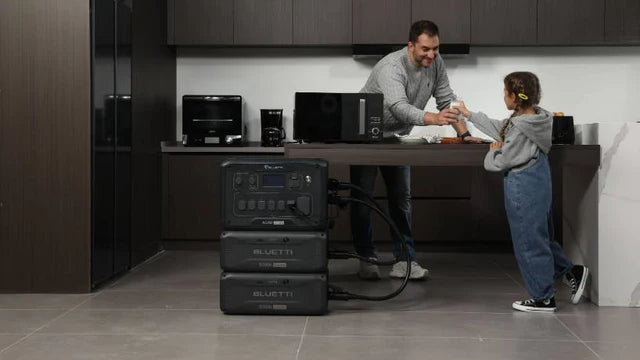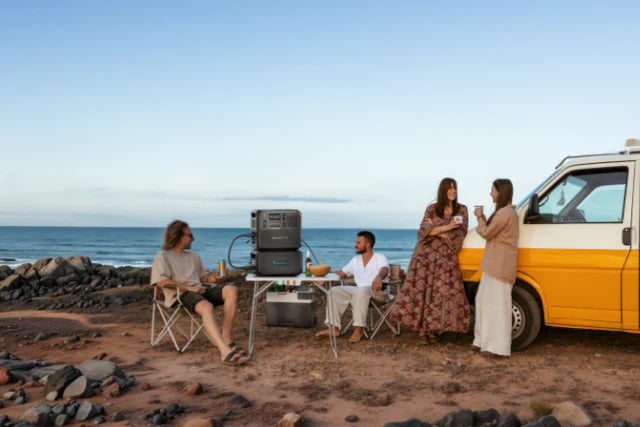The first thing you're concerned about when the power goes out is power failure & food safety. How long can you keep your food safe in the fridge or freezer without power? What are the best safety measures you can take if and when a power outage occurs, in order not to get sick from food that has turned bad? This in-depth guide gives you the best advice you need to handle your food during a power outage, how long food lasts when there’s no electricity, and what steps to take to avoid nasty foodborne illness.
Understanding Risks During Power Outages
In a power outage, your refrigerator and freezer can’t work to keep food at safe temperatures. Without power, bacteria in perishable foods can rapidly multiply when the temperature climbs above 4°C (40°F). Pathogenic bacteria, like Salmonella, Listeria and E. coli can grow exponentially, meaning you may be at risk of foodborne illnesses that cause symptoms such as nausea, vomiting, diarrhea and fever.
You have to be especially aware if there are any vulnerable people in your household like kids, elderly folks, pregnant women or those with compromised immune systems, since they're more likely to experience the harmful side effects of food poisoning.
In addition to health risks, food losses due to power outages also carry economic effects. Eating spoiled food from a power failure one to two times per year, can cost households $100 to $300 each event, depending on duration and severity. This usually leads to discussion of insurance coverage or preparation for food spoilage during power outages.
Pre-Outage Preparation

Being prepared before a power outage is very important. This is because you can keep you and your family safe from any of the other risks that come with food safety during a power outage. If the electricity goes out by surprise, a little preparation can be the difference between salvaging your food and wasting it, facing economic loss or a bout of foodborne illness. To avoid being caught up in a possible outage, you want solid plans, supplies and systems that will keep food safe for as long as it can be. Here’s what you need to do.
- Things like canned goods, dried beans and rice, pasta, peanut butter, bottled water don’t need refrigeration and can easily take you through prolonged outages. Consuming these food items will leave you less dependent on cold storage in the event of a power blackout.
- Water is particularly important, with the general guidance for emergency supplies being about one gallon per person per day for a minimum of three days. Drinking water for hydration as well as food preparation and hygiene is vital, of course.
- You should also prepare your appliances, by setting and regularly checking refrigerator and freezer temperatures in good times. Optimal refrigerator temperatures are 4 degrees Celsius (°C) or below, and freezers should be at -18°C (0°F) or colder.
- Use appliance thermometers to tell you exactly how cold your cold storage is running and can help you respond more effectively when the power goes out.
- Consider buying extra cold storage accessories. Stock coolers or insulated vessels for transporting perishable foods, should you lose power for more than four hours. Ice packs / frozen gel-packs in these coolers ensure that the cold is retained.
- Dry ice is another useful option for extended outages; 50 pounds of dry ice will keep a fully stocked 18 cubic foot freezer cold for up to 48 hours. But obtaining dry ice needs planning, maintenance and safety considerations, as it's not something you want to handle with your bare hands.
- With so many homes today being wired (wireless), the tech in your house can help you with pre-outage prep. A number of smart homes, and refrigerators too, are now equipped with app-based alerts that let you know right away if power’s been cut or appliance temperatures are teetering in the danger zone. These live-in-the-moment updates provide you invaluable lead time so that you can transfer food to keep-cool storage or get your hands on some dry ice before that supply fails.
- Organizing your freezer and fridge also can help you keep things stable, and prevent food loss if the power goes out. Fill your freezer as much as you can; a full freezer creates thermal mass that helps mitigate temperature shifts.
- To supplement, freeze ahead of time some water bottles that you can put in both coolers and refrigerators during outages. Close stacking eliminates air pockets that can accelerate the warming process.
- Another factor is labeling foods with the purchase or prepared dates. It makes decisions easier to judge if food is safe or not once the power comes back. Knowing how long an item has been open or lying in wait can make clear whether one can keep it or must toss it.
Ultimately, having a power outage-specific emergency kit is key. This kit should have an appliance thermometer, flashlight or battery-powered lantern, bottled water, canned/non-perishable food and manual can opener, cooler and ice packs and emergency phone numbers like those for the local power company or health department. Store it somewhere familiar and easy to reach, and make a point of inspecting regularly for freshness and utility.
During the Outage Actions

When the power goes out & food safety is compromised, follow your limited-outage action plan. First, you should limit the number of times fridge and freezer doors are opened to conserve cold air and extend safe holding time. A full freezer can keep food frozen for about 48 hours (24 hours if half full) if the door remains unopened, and a refrigerator will typically keep food at safe temperatures for about four hours.
If the power outage lasts more than four hours and you have coolers and ice, you can move perishable refrigerated foods to your cooled cooler to maintain a temperature below 4°C (40°F). Never eat food to see if it’s still safe. Spoilage bacteria do not necessarily cause noticeable changes in smell, taste or appearance. If in doubt, throw it out.
If you have special dietary needs such as gluten-free, vegan or allergy-friendly you need to be extra cautious. These items may deteriorate at a different rate, or have replacements that should be stored in certain ways. For instance, gluten-free breads may go stale quickly, and certain plant-based meats should be treated as if they’re regular meat.
Post-Outage Evaluation
Once the power comes back, do the following:
- Assess your food, and after power is back on and clean equipment it may have come into contact with.
- Start with perishables like meat, poultry, fish, dairy and eggs cooked leftovers and cut fruit or vegetables.
- If available, use a food thermometer to ensure that refrigerator and freezer foods have not warmed up above safe temperatures. Food stored above 4°C (40°F) for more than two hours may become unsafe.
- Disinfect refrigerator and freezer shelves completely before returning food. Wash with a weak solution of bleach or commercial sanitizer to kill any bacteria from previous spoilage.
- If foods contain ice crystals or are refrigerator-cold (4°C/40°F or below) they can be refrozen, cooked and eaten at once. Refreeze foods that have thawed thoroughly and warmed to unsafe temperatures.
To aid you in speedy decision-making, use the table below to help categorize what foods should be kept or thrown out following a power outage.
|
Food Type |
Safe If... |
Discard If... |
Examples |
|
Dairy Products |
Firm block cheeses, processed cheeses cold |
Milk, cream, soft cheeses above 4°C for 2+ hours |
Cheddar, mozzarella - Milk, yogurt |
|
Fruits & Vegetables |
Whole and uncut, cold |
Cut fruits, cooked vegetables above 4°C |
Apples, carrots - Cut melons, cooked peas |
|
Meat, Poultry, Fish |
Still frozen or <4°C held <2 hours |
Thawed >4°C >2 hours |
Frozen chicken, fish - Thawed stews |
|
Eggs |
Unbroken, refrigerated |
Off-odor or warmed eggs |
Shell eggs intact - Liquid eggs warmed |
|
Prepared Foods |
Cold and consumed within 2 hours |
Leftovers held >4°C more than 2 hours |
Fresh salads - Meat casseroles >2 hours |
|
Spreads, Condiments |
Commercially sealed |
Homemade mayonnaise or dressings kept unrefrigerated |
Ketchup, mustard - Homemade mayo |
Compost safe-to-discard fruits and vegetables, rather than disposing of them to land-fill waste.
Long-Term Prevention and Resources
When it comes to power outage induced food spoilage & long term food safety, there is no better defense against food spoilage and health risks than being proactive with investments and planning. Power outages can hit without warning and last for hours or even days, meaning having systems in place and knowledge at the ready can save you money, time and stress and safeguard your food supply.
Backup Power Systems: Generators and Batteries
BLUETTI Elite 100 V2

When it comes to power failure and food safety, the BLUETTI Elite 100 V2 is perfect for households in need of a lightweight but powerful backup system to keep fridges, freezers and other essentials running during an outage. This small power generator, that weighs 25lbs, holds a 1,024Wh LiFePO₄ battery with more than 4,000 life cycles making it the best option for over ten years of heavy use.
It provides 1,800W of continuous power (with a burst capacity of 3,600W), which is sufficient for running appliances such as a refrigerator, lights or even a kettle. One of the most impressive features is its TurboBoost™ charging, which can take you from 0% to 80% in about 45 minutes using an AC input, or a full recharge in only 70 minutes with solar panels.
In addition, the BLUETTI Elite 100 V2 is also a very fast 10ms UPS that responds so quickly to power issues by shifting to battery power that delicate devices, (like routers, CPAP machines or temperature monitors) are untouched. Its 11 output ports, which include two USB-C (up to 140W), a couple of regular AC outlets and half a dozen DC ports, are general-purpose enough for kitchen appliances as well as tech essentials.
Efficient and eco-friendly with solar charging compatibility, the BLUETTI Elite 100 V2 is ideal for homes in need of a peace-of-mind and reliable backup power to keep food safe during short- to medium-length outages.
BLUETTI Apex 300

The BLUETTI Apex 300 is the next level solution for households looking for more power and scalability in power failure & food safety. With an enormous capacity of 2,764.8Wh and 3,840W output (it’s expandable up to 58kWh), it is meant to power more than just refrigerators and freezers as well as entire homes.
Its power lifting Mode provides a higher surge capacity of 7,680W to handle the start-up power requirements of those heavy duty appliances including a normal size stove, clothes dryer and water heater during a power outage.
The BLUETTI Apex 300 provides 0ms instantaneous UPS transfer, which ensures perfect transition to battery backup power system. With dual 120V/240V output, it can accommodate the full range of standard household products as well as those needing higher voltage.
A generous solar input supporting up to 6,400W means a full recharge in about 1.2 hours, while advanced tech such as EnerBalance™ AI battery management maximizes both the safety and efficiency of all connected devices.
The automotive-grade LiFePO₄ battery can be charged 6,000+ times before its capacity drops to 70%. When coupled with energy-saving features such as grid savings mode (an automatic charging and discharging feature for off-peak time) the BLUETTI Apex 300 isn’t just a backup but it’s a cost-effective addition to your home that will help save you money on energy costs over the long-term while keeping food safe.
Insulated Storage and Food Grouping Techniques
In addition to producing power, constructing a well-insulated cold storage can physically prolong the safety of your food in an outage. It’s better to have a chest freezer rather than an upright model as combo-style also features an open style design which will not lose out much cold air. Insulating the refrigerator or freezer further with more insulation material, or using a cover that traps coldness to pack ice lasting as long as possible.
Another option is to proactively organize tightly-packed foods in both the refrigerator and freezer. With a full cooler, the goods are compacted and become a cold mass which cools longer and avoids thawing or warming. If your cooler is only half full, pack the remaining space with frozen jugs of water, which will also help protect against rising temperatures.
Fill up the freezer as much as you can. A well-stocked freezer holds its chill better than one that is half empty. It also slows the rate at which your food spoils when the power goes out. To bail, you can freeze bottles of water during the normal course of things to add more thermal mass. It’s also a method for getting pre-made ice for your coolers should you need to move some food during an outage.
Regional and Seasonal Variations Affecting Food Safety

Seasonal changes significantly affect how long your food stays safe in case of a power outage. When it's hot outside during the summer, you can expect temperature to rise around your dwelling, reducing how long meats and frozen products stay out of danger.
For example, food in a fridge will heat up faster if the temperature inside your home is higher than 25°C (77°F), possibly bringing safe holding times down from four hours to two or less. Also, freezers have condensers built in which overheat and cause really bad airflow after never scraping. Similarly warm places with open freezer doors thaw much more quickly.
If you live in a hot summer climate, or erratic seasons, it would be best to have back up ep methods. That could lead to anything from more frequent ice purchases, bigger-capacity cooling systems and even seasonal changes in the foods you stock such as more canned and dried goods in summer.
In cold-climate areas or winter outages, food safety windows naturally increase your time to consume supplies. Power outages during cold snaps also pose the risks of pipes bursting from freezing and damage to appliances, which can have indirect impacts on food safety.
Local health officials typically offer guidance for the region in addition to more general advice. Keeping up with municipal or provincial resources helps you to prepare for weather-specific outage durations in your area.
Utilizing Technology and Community Resources
Smart home gadgets can help alert you to outages early. Sensors inside your refrigerator and freezer that are connected by Wi-Fi to the internet, or tied into your home automation system, can send push notifications to your mobile device so you can take quick action before food warms up beyond safety levels.
Apps for disaster preparedness also provide checklists and reminders to help prompt you when it’s time to refreeze or eat the perishable items. Monitoring through these systems allows you to plan for a backup such as taking food offsite, into cold storage or reaching out to neighbors who may have power.
Sharing communal resources during longer outages is another means of reducing waste. Food cooperatives, emergency centres or neighbours who have power and a functional refrigerator may be able to store your perishable items temporarily, so they do not go off.
Frequently Asked Questions
How long can a freezer last when there’s no power?
A full freezer can safely keep food frozen for 48 hours without being opened while a half-full freezer will go about 24 hours.
How long does food last in the fridge without power?
Food inside the refrigerator will be safe for about four hours, provided that the door remains closed.
Can you eat food after a blackout?
Yes, only if the food has not exceeded 4°C (40°F) and is free from spoilage. When in doubt, throw it out.
Is it ok to refreeze food that has thawed?
You can refreeze food that has ice crystals or is refrigerator-cold, but fully thawed food must be cooked before it’s refrozen.
What are some tips to avoid food from being spoiled during a power cut?
Do not open the refrigerator or freezer doors, utilize coolers with ice if outages extend beyond four hours and investigate backup power methods.







